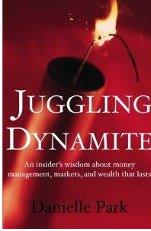Market turmoil year to date is keeping business media full of superlatives and the usual finance salespeople talking up buying opportunities (note they never suggest good selling opportunities).
But, truth be told, to date little has been accomplished in terms of meaningful mean reversion. With equity valuations still in the who’s who of historical extremes, the downside due in this epic cycle has barely just begun. See Even after a tumble, the stock market isn’t priced right for a sober reminder of why valuation highs mean we are still in the midst of the secular bear that began in 2000:
Crestmont Research illustrates the importance of valuation by looking at stock market total returns between 1919 and 2017 and slicing them into deciles from worst to best over 20-year periods…
The main difference between the two was starting and ending valuation–specifically the cyclically adjusted price-to-earnings ratio that measures the past 10 years of inflation-adjusted earnings popularized by economist Robert Shiller. The lowest-return periods had an average starting cyclically adjusted P/E of 18.2 but ended at 9.2. The best periods started at 10.1 times on average but ended at 28.2 times. Even after the recent tumble in prices, the Shiller P/E, currently at 31, sits firmly in the most expensive decile historically.
Valuation easily trumps earnings growth. The Dow Jones Industrial Average first flirted with the 1,000 point mark in 1966 but didn’t break through permanently until late 1982.
While companies with positive earnings and growth rates are trading at egregious valuations, imagine what reward is coming for buyers of the 70% of initial public offerings sold with negative earnings in 2017 (this rivals the all time high of the 2000 bubble euphoria after which the tech heavy NASDAQ fell 78%).
Lest we miss the forest for the hype here, the number one goal of savings management is to protect our capital from large drawdowns even if market prices recover in the years following. It’s not bravely stomaching downside ‘volatility’ that matters most in terms of financial stability and strength, it’s first and always about minimizing capital loss and only accepting risk where the odds of gain significantly outweigh the odds of loss.
Sustainable financial management is one of the most critical aspects of human health and happiness. Those who think this is wrong, don’t understand (or care?) enough about real life impacts yet. A new US study published in the Journal of the American Medical Association this week, confirms that big financial losses are likely to shorten a person’s lifespan. See: Midlife ‘wealth shock’ may lead to death: study:
“This is really a story about everybody,” said lead researcher Lindsay Pool of Northwestern University’s medical school.
…We should be doing everything we can to prevent people from experiencing wealth shocks,” said Dr. Steven Woolf, director of the Virginia Commonwealth University Center on Society and Health, who was not involved in the study…
“We don’t yet know whether policies that aim to protect people’s savings will have a direct effect on mortality or not,” Baicker said. “But that’s not the only reason to try to protect people’s savings.”
If avoiding wealth shocks is key to public health, then avoiding asset bubbles (that always burst) is a huge part of that goal–more reasons to reject the bubble-pumping monetary policy and sales-focused financialization which has plagued us for the last 20 years.
Addicts often need to bottom before they can rebuild. The next bear market will offer another opportunity for governments and individuals to admit, repent, reform and recover wiser, healthier, financial policies and procedures. The upside in this is huge.


